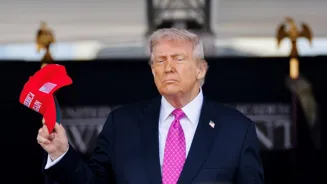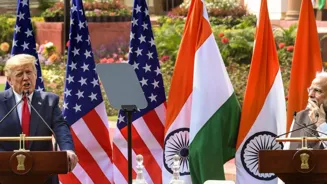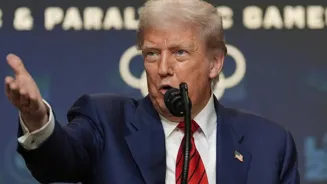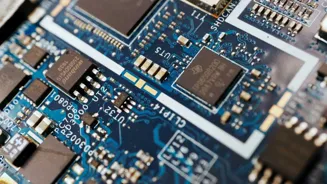What is the story about?
US President Donald Trump on Wednesday (August 6, local time) announced plans to impose a 100 per cent tariff on computer chips and semiconductors, while exempting companies that manufacture them within the United States. The move
is expected to drive up the cost of a wide range of electronics, cars, appliances, and other essential tech-driven products.
“We’ll be putting a tariff on of approximately 100 per cent on chips and semiconductors,” Trump said while speaking at the Oval Office. “But if you’re building in the United States of America, there’s no charge.”
The announcement follows Trump’s decision to impose an additional 25 per cent tariff on Indian goods over its continued oil trade with Russia, effectively doubling the overall tariff rate to 50
per cent.
The new tariffs are scheduled to take effect in 21 days, allowing time for India and Russia to negotiate with the US administration over the proposed import duties.
The global chip shortage during the Covid-19 pandemic had already led to rising car prices and contributed to broader inflation. Since then, demand for semiconductors has continued to surge, with global sales rising 19.6 per cent in the 12 months ending June, according to the World Semiconductor Trade Statistics organization.
Trump’s latest tariff move marks a sharp departure from current strategies aimed at boosting domestic chip production through subsidies and incentives. Instead, he’s opting for a more aggressive approach, using tariffs as leverage to push companies to manufacture within the US.
By making imported chips more expensive, Trump is betting that firms will be compelled to shift production domestically, even if it risks squeezing profits and raising consumer prices on products like smartphones, televisions, and appliances.
“We’ll be putting a tariff on of approximately 100 per cent on chips and semiconductors,” Trump said while speaking at the Oval Office. “But if you’re building in the United States of America, there’s no charge.”
The announcement follows Trump’s decision to impose an additional 25 per cent tariff on Indian goods over its continued oil trade with Russia, effectively doubling the overall tariff rate to 50
The new tariffs are scheduled to take effect in 21 days, allowing time for India and Russia to negotiate with the US administration over the proposed import duties.
The global chip shortage during the Covid-19 pandemic had already led to rising car prices and contributed to broader inflation. Since then, demand for semiconductors has continued to surge, with global sales rising 19.6 per cent in the 12 months ending June, according to the World Semiconductor Trade Statistics organization.
Trump’s latest tariff move marks a sharp departure from current strategies aimed at boosting domestic chip production through subsidies and incentives. Instead, he’s opting for a more aggressive approach, using tariffs as leverage to push companies to manufacture within the US.
By making imported chips more expensive, Trump is betting that firms will be compelled to shift production domestically, even if it risks squeezing profits and raising consumer prices on products like smartphones, televisions, and appliances.
Do you find this article useful?














